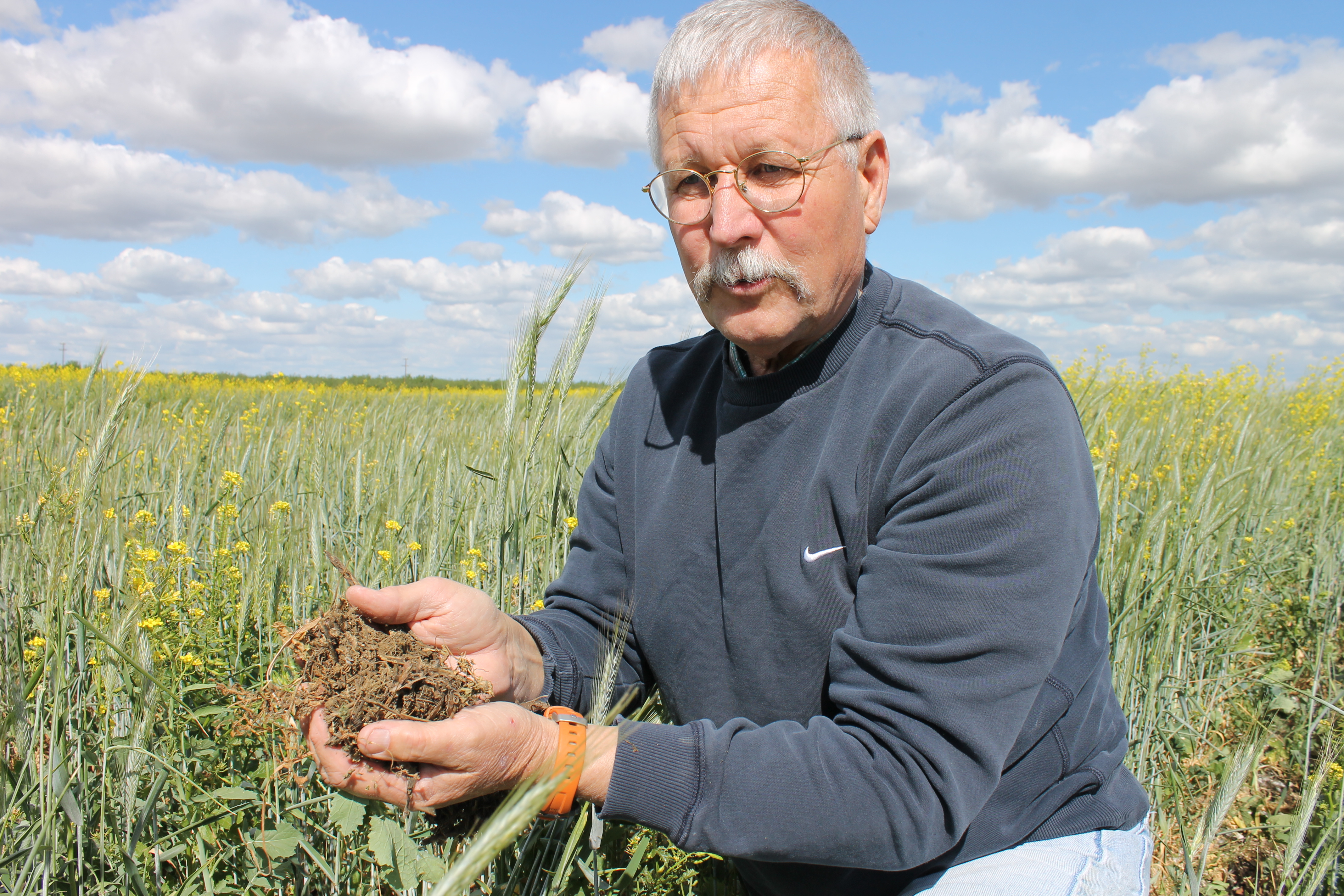Let’s start with Jeff Mitchell’s car. Let�
When I say the back seat is packed solidly with papers, I mean that literally: It’s as if Mitchell had pulled up alongside a set of filing cabinets and transferred everything that could fit into the back, carefully filling the leg space until it was high enough to be incorporated into the stack on the seats. The papers are wedged solidly together, three-quarters of the way up to the headrests.
There’s some PVC pipe back there too, some metal tools, a power cord, and some luggage. But that’s just what I could see on the surface. On the front dash there’s another layer of files, and a layer of dirt. And again, when I say dirt, I’m not overstating it. It’s not just a patina of dust; there are big clots of mud clinging to the face of the radio.
“What can I say?” Mitchell said when I asked about the state of his vehicle. “I’m embarrassed. People say I could just scatter seeds in here and they’d grow.”
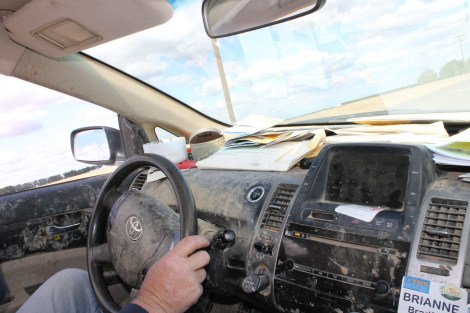
I was never able to get a straight answer out of Mitchell as to why his car was so squalid, but it’s easy enough to guess. He has spent years driving up and down California’s long Central Valley, from one field to another, asking farmers to sign up to try new conservation techniques. He estimates that the car has driven 600,000 miles, though he can’t say for sure: The odometer stopped at 299,999. The car really does have to function as a high-speed file cabinet, as well as a mobile tool shed and soil-sample transporter.
“So, is this basically your life?” I asked, after about an hour driving down highway 99. I was expecting a good-natured gripe about him becoming permanently welded to the driver’s seat. But instead he said:
“You know, I’ve been truly fortunate. I’ve been doing this long enough that wherever I go I’ll look out and see a field and think, ‘That’s where we did that one trial, how’s that coming along?’ And there have been some big changes. It’s gratifying. There’s a soil scientist at Berkeley, Garrison Sposito, who says it may be just once or twice in a century that agriculture has an opportunity to re-create itself in a revolutionary way. Now, it may sound way over the top, but I think that’s what’s happening with conservation agriculture. It’s energizing for me to wake up to that every day.”
His official title is Associate Extension Vegetable Crops Specialist, but since the early 1990s Mitchell has really been a Johnny Appleseed for conservation, leading an ever-growing band of farmers toward sustainability. The idea driving Mitchell’s work is to develop farm systems that are closer to proven natural systems. That main idea breaks down into four tenets: Don’t disturb the soil; maximize the diversity of plants, insects, fungi, and microbiota; keep living roots in the soil; and keep the ground covered with plant residues. Since 1999, a team working with Mitchell has been demonstrating that it’s possible to do all that profitably.
After another hour on the road we reached the University of California West Side Extension and Research Center. Behind a handful of one-story buildings lay a collection of plots that workers have farmed continuously with conservation techniques. Mitchell took me to a field where they had been experimenting with a tomato-and-cotton rotation since 1999: “These beds have not moved, they have not been worked, in 15 years.” This 15-year study suggests that there are real, sustained benefits to the methods that the UC researchers have pioneered.
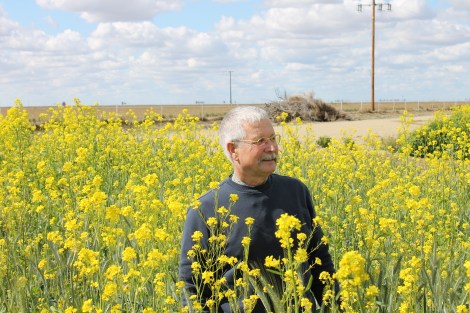
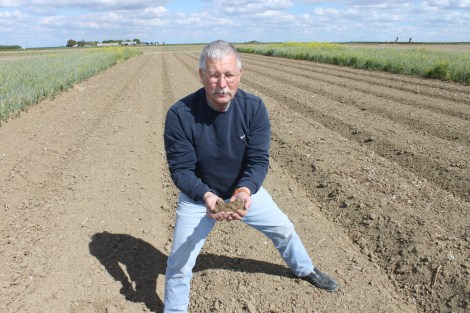
Mitchell waded into the shoulder-high cover crops of one bed. There’s a bed nearby of cleanly plowed soil. The contrast couldn’t be more different. Mitchell knelt in the cover crop, pushing aside the plants. The earth was covered in a layer of duff (dead leaves and twigs). It looked a lot like — well, like any bit of ground that humans haven’t recently scraped.
“There’s more organic material going into the soil, more carbon and more nitrogen. There’s more capture of water, and the shade and residue reduces soil water evaporation.”
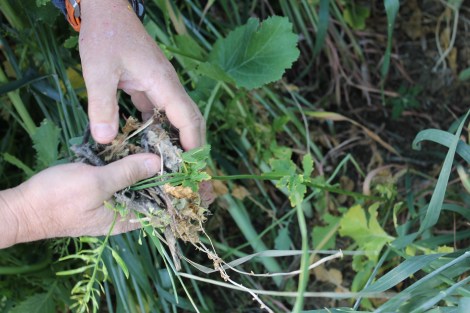
These kind of innovations might seem obvious, but the journey to no-till cotton has been exasperatingly hard. Cotton requires coddling: It has a large seed, but it’s not a vigorous seedling, so often a farmer will knock off a layer of dry soil, drop the seeds onto moist earth, then cover it up. All this requires tilling the field. So Mitchell’s team decided to fine tune a planter to bury the seeds at just the right depth: Too close to the surface and they’d dry out, too deep and they’d never make it up. But when they ran the planter over the field it bounced over dry tomato stalks and dropped seeds higgledy-piggledy.
That first year the crop came up patchy. So they started trying residue managers, to push debris out of the way of each seed line, then brush it back into place. Mitchell went to Georgia to see what they were using there. They tried different timing and amounts of irrigation. If they tried to plant while the field was too wet the tractor would turn everything into a muddy mess. If they waited until it dried, the seed wouldn’t get enough moisture. If they irrigated after planting, the soil might form a hard crust that the seed couldn’t penetrate. They made pass after pass, making minute adjustments to the equipment until tempers frayed.
“I’m not an argumentative guy, but some of the things have been so trying,” Mitchell remembered. At the end of one of those days, one of Mitchell’s collaborators threw up his hands and said, “This will never work!” But then, in 2004, after years of disappointments, they finally hit on just the right combination of techniques — specific levels of irrigation, fine-tuned equipment, special disk and finger attachments for the planter — and got a beautiful cotton crop.
When all the pieces came together, the cotton began producing reliably. And Mitchell also noticed an added benefit: As the years passed, the soil improved, and all this got easier. Instead of the farm equipment needing to break up clots of compacted soil, the researchers found they were planting into soft, fine-grained earth, continuously tilled by worms and roots and microorganisms.
Mitchell’s work looks like a clear winner on paper: The yields are now the same as in the plowed beds, and the no-till beds take less work, sequester more carbon, suck up less water, and require less tractor fuel. And yet few farmers have taken up these methods.
“When I had the results showing that you can save 16 percent of irrigation water with residues and no till, I thought it would really change things in the Valley,” Mitchell mused. “But it hasn’t seemed to be that relevant.”
There are farmers successfully using these methods, but the percentage is still very low. And Mitchell can understand why people are skeptical. The cost savings — for fuel and labor (water prices are too variable to estimate) — are just $70 an acre, which isn’t terribly significant for a cotton farmer. And, as Mitchell knows, there are lots of things that can go wrong when a farmer starts trying new things.
That reluctance to change doesn’t slow Mitchell down for long. He knows that surmounting the technological challenges is less than half the battle. The bulk of the work is in teaching people how to do the same thing, and — even more importantly — convincing them that it’s worth their time.
And so he gets in the dirty Prius again, year in and year out, adding mile after uncounted mile, and carrying his Johnny Appleseed act across California.

